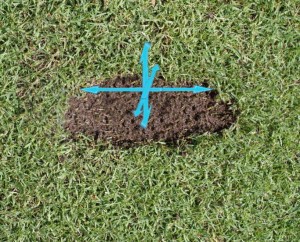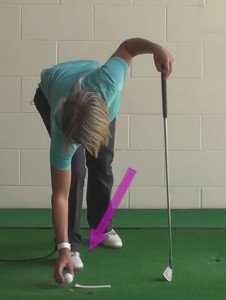
Looking at your divots once you have hit your golf shot will give you valuable information as to what happened during your swing.
Initially, look at the strike. If you place a marker opposite the golf ball, you can then look at where your divot began relative to the golf ball. If your divot begins before the marker, you have hit the ground too early before the ball. This will result in a loss of club head speed, and therefore a loss of distance from your shot. If you leave no divot, you are catching the ball on your upswing rather than your downswing and this will result in connections with the top of the ball and very low shots. The ideal place for your divot to start is just after the marker. This demonstrates that you are making a downward strike on to the ball but that you are connecting with the ball before the turf, and therefore delivering maximum club head speed into the ball for maximum distance of your golf shots.

Divots can also provide valuable information as to why the ball has flown in a particular direction. Once you have hit your shot, stand directly behind your divot, in line with the target. Look at the direction of the divot in relation to the target. Does it look like it is going to the left, to the right or straight at the target? Where divots point provides valuable information as to the club’s swing path through impact. Understanding the relationship between a club’s swing path and the club’s face angle will help you diagnose why your ball is flying in a particular manner and then you can make changes to your swing to improve your ball flight.
Ideally, you want to see that your divots are pointing directly at the target. Any shots that then miss the target must be due to the club face position, so if your shot lies to the right the club face is aiming that way as it connects with the ball, and conversely if your divot is straight but the ball flies left, the club face is pointing left as it connects with the ball.
Looking at your divots will provide you with a wealth of information about how you are swinging your club and what must be happening during impact and once you understand this you can then begin to work on the improvements that are required.






